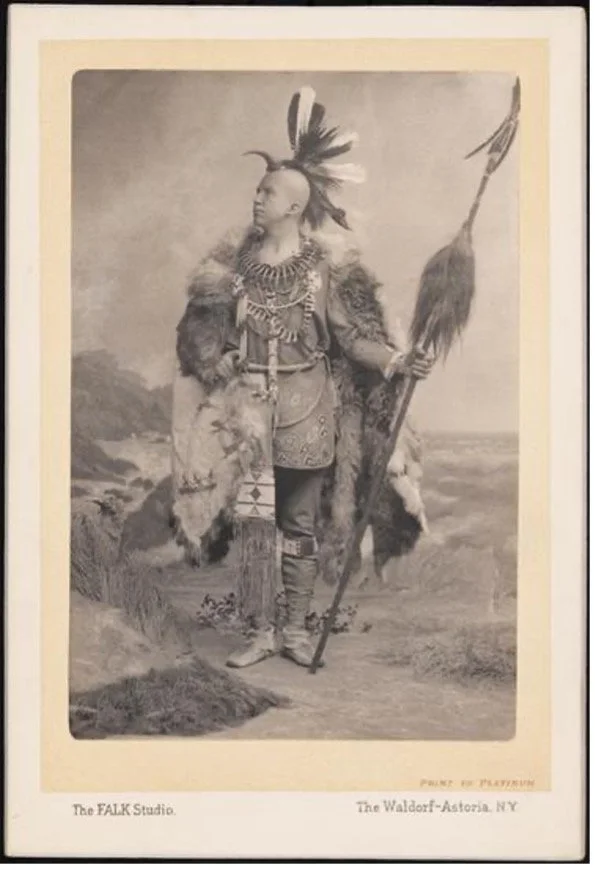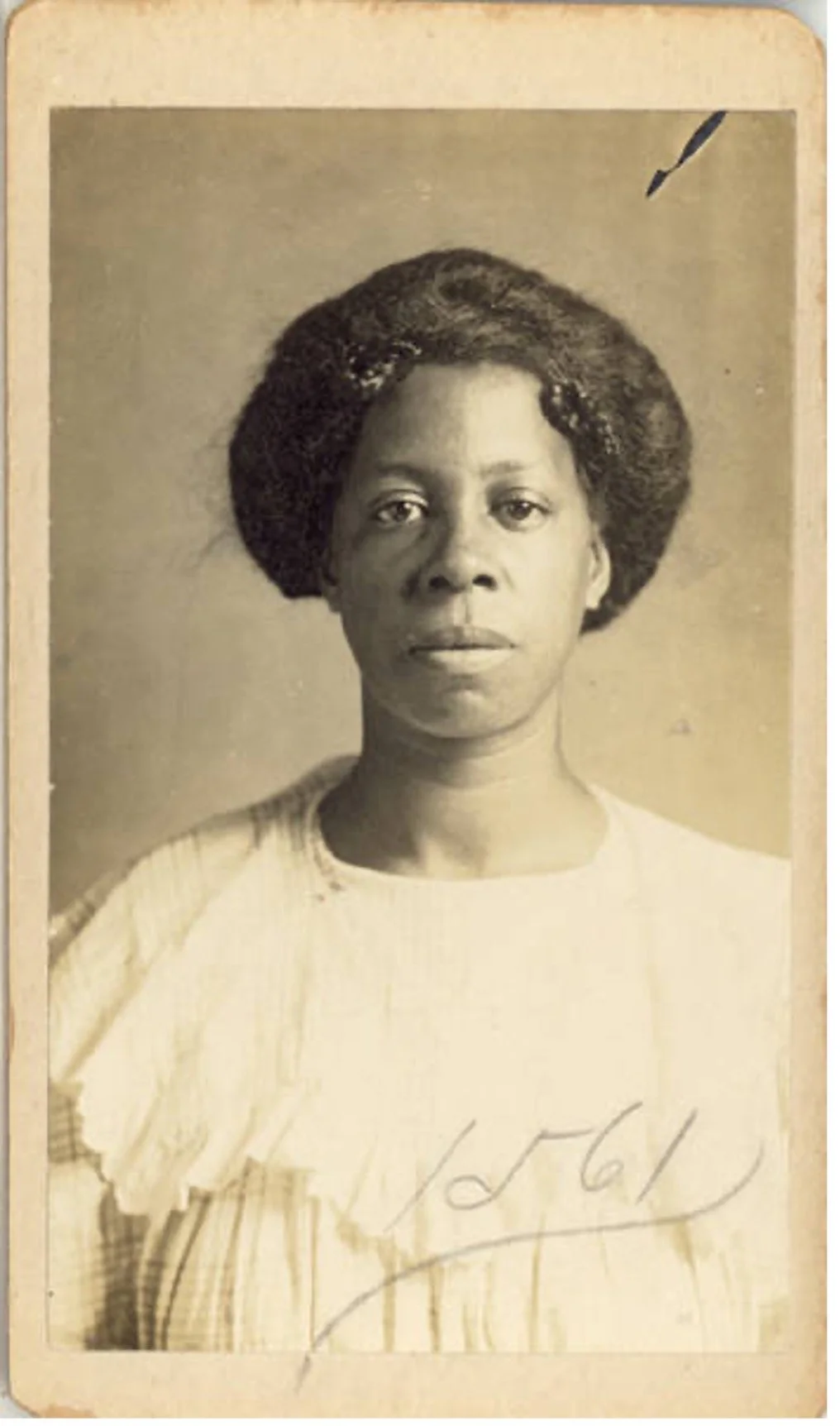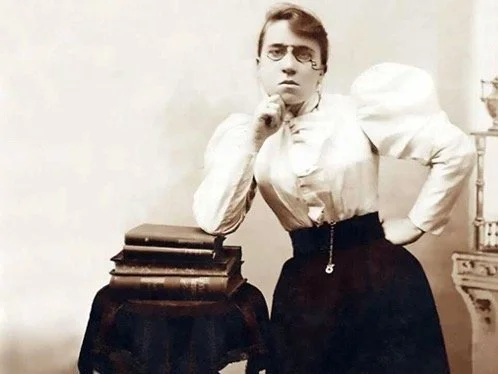Well Suited: A History of Style and Prejudice in the Land of Opportunity
White law clerk Richard Welling masquerading as Algonquin Chief Miantonomah at the Bradley-Martin Ball, Feb 11, 1897. Photo by Benjamin Falk.
Cartoonist Norman Jennett used a fancy side-button kid-leather boot to represent Black men abusing their power. “A Serious Question—How Long Will This Last?”News and Observer, 13 Aug 1898. Courtesy UNC Libraries.
Louisa Barnes, wearing a Mother Hubbard gown, listed as a prostitute. Date of arrest, 5/23/1912. Courtesy of New Orleans Police Department Mugshot Collection, mug BO54_1.
Anarchist Emma Goldman and mob leader Al Capone knew how to use accessories to create public personae, leveraging established indicators of success and intellect..
“Dress for success.”
Such a simple piece of advice, so accepted as common sense that it’s easy to forget that it has a history—like everything. Well Suited looks at the roots of modern American ideals of dress, power, respectability, and deviance, between about 1890 and 1940. This era fashioned many of our beliefs and biases about what we wear.
I push back against the assumption that America’s casual couture is generally an effect of democratic ideals or that dress codes were designed for or result in safety or equity. In many cases, these new sartorial standards worked to maintain the status quo by limiting access to financial and social mobility, and sometimes, even justifying violence.
In eight narrative chapters, I show how both reform and exclusion moved Americans towards more casual, simplified wardrobes. Progressive reformers portrayed the conspicuous consumption of corporate bigwigs and Wall Street wolves as evidence of inequality—and brokers and CEOs reacted with defensive dress, denying avarice with their appearances. At the same time, white supremacists depicted the fine dress of newly successful Black men as proof of political corruption and personal perversion. Portrayals of coalescing queer communities and experiments in legal prostitution helped reinforce the idea that dressing “up” was morally suspect, even deviant. I connect past, present, and future by weaving in personal and contemporary anecdotes and relevant trends.
A hundred and thirty-ish years ago , laws and regulations concerning public appearances multiplied, at work, at school, and at play. At the same time, the Supreme Court sanctified segregation, women fought for equal rights, and racial politics turned murderous.
Every step of the way, every single day, the people involved in these stories all got dressed.
(book under contract with UNC Press, aiming for 2026 publication)



